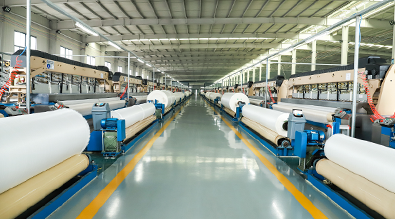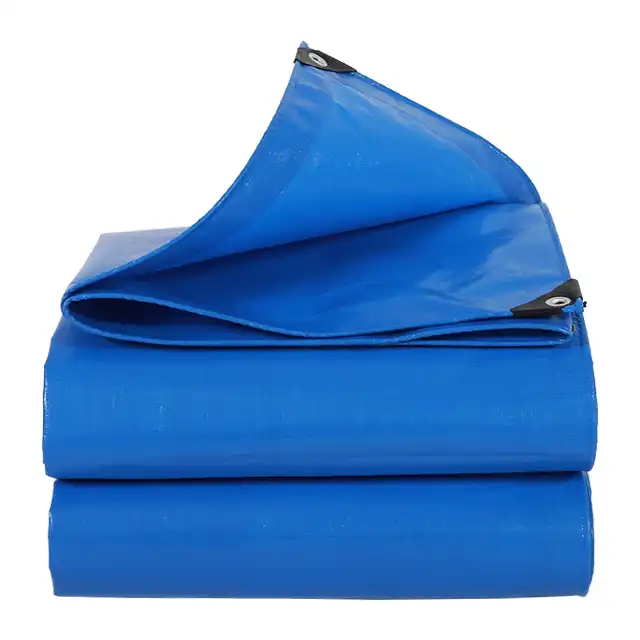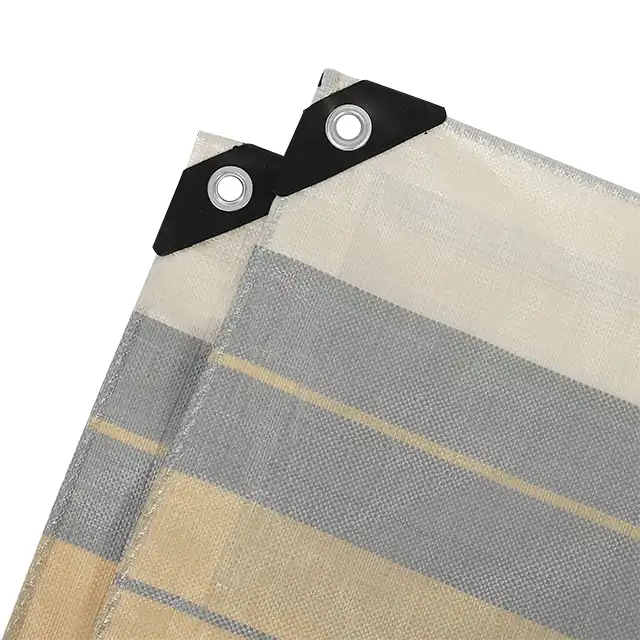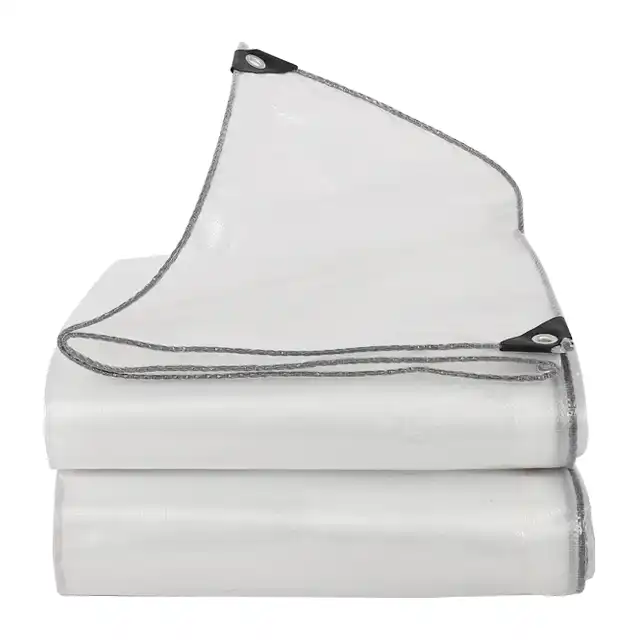The Role of Tarpaulin in Disaster Preparedness and Relief
When natural disasters strike, communities face immediate challenges that require swift, reliable solutions to protect lives and property. Among the most versatile and essential tools in disaster preparedness and relief operations are tarpaulins, particularly specialized variants like fire prevention tarpaulin that offer enhanced protection against multiple hazards. These protective coverings serve as the first line of defense in emergency situations, providing temporary shelter, protecting valuable resources, and facilitating rapid response efforts across diverse disaster scenarios. From hurricane-damaged homes requiring immediate weatherproofing to wildfire evacuation centers needing flame-resistant materials, tarpaulins have become indispensable components of modern disaster management strategies, offering practical solutions that can mean the difference between recovery and complete devastation.
Essential Protective Functions of Tarpaulins in Emergency Situations
Immediate Shelter and Weather Protection
 During disaster scenarios, traditional shelter systems often become compromised or completely destroyed, leaving vulnerable populations exposed to harsh environmental conditions. Fire prevention tarpaulin materials provide critical temporary housing solutions that can be rapidly deployed to protect displaced families and individuals from rain, wind, and temperature extremes. These specialized tarpaulins, manufactured with HDPE woven fabric and LDPE coating, offer superior durability and weather resistance compared to standard materials. The 95gsm weight specification ensures optimal balance between portability and strength, making them ideal for emergency deployment. Professional-grade tarpaulins feature 100% waterproof construction with tear-resistant properties, ensuring they maintain integrity even under severe weather conditions. The UV treatment ranging from 1% to 7% provides additional protection against sun damage, extending the lifespan of temporary shelters during prolonged displacement periods. Fire retardant tarpaulin options become particularly valuable in areas where secondary fire hazards pose ongoing threats to emergency shelters.
During disaster scenarios, traditional shelter systems often become compromised or completely destroyed, leaving vulnerable populations exposed to harsh environmental conditions. Fire prevention tarpaulin materials provide critical temporary housing solutions that can be rapidly deployed to protect displaced families and individuals from rain, wind, and temperature extremes. These specialized tarpaulins, manufactured with HDPE woven fabric and LDPE coating, offer superior durability and weather resistance compared to standard materials. The 95gsm weight specification ensures optimal balance between portability and strength, making them ideal for emergency deployment. Professional-grade tarpaulins feature 100% waterproof construction with tear-resistant properties, ensuring they maintain integrity even under severe weather conditions. The UV treatment ranging from 1% to 7% provides additional protection against sun damage, extending the lifespan of temporary shelters during prolonged displacement periods. Fire retardant tarpaulin options become particularly valuable in areas where secondary fire hazards pose ongoing threats to emergency shelters.
Equipment and Supply Protection
Emergency response operations require extensive equipment and supplies that must remain functional and dry throughout disaster events. Fire prevention tarpaulin covers provide essential protection for generators, medical equipment, communication devices, and food supplies that form the backbone of relief operations. The anti-corrosion and shrink-proof properties of quality tarpaulins ensure that sensitive equipment remains operational even in challenging environmental conditions. Advanced tarpaulin materials with arctic flexibility maintain their protective qualities across temperature ranges from extreme cold to intense heat, making them suitable for diverse geographical disaster zones. The tear-resistant construction prevents damage from debris and wind-borne objects, while the waterproof barrier keeps electronic equipment dry and functional. Fire retardant tarpaulin specifications become crucial when protecting equipment near areas where fire hazards remain present, such as damaged electrical systems or fuel storage areas that could ignite during recovery operations.
Secondary Hazard Mitigation
Beyond primary disaster impacts, communities often face secondary hazards that can compound damage and complicate recovery efforts. Fire prevention tarpaulin materials serve as barriers against these additional threats, including chemical spills, contaminated water, and fire spread from damaged infrastructure. The specialized coating systems used in professional-grade tarpaulins provide resistance to acids and chemicals that may be present in disaster-affected areas. When deployed strategically, these materials can prevent contamination of clean water sources and create safe zones for relief operations. The flame-retardant properties of specialized tarpaulins help contain fire spread in areas where electrical systems remain compromised or fuel sources pose ongoing ignition risks. Fire retardant tarpaulin installations can create firebreaks around critical infrastructure, protecting power restoration equipment and communication systems essential for coordinated relief efforts.
Strategic Applications in Disaster Response Operations
Emergency Shelter Systems
Professional disaster response teams rely on systematically designed shelter systems that can accommodate large numbers of displaced individuals while maintaining safety and dignity standards. Fire prevention tarpaulin materials form the foundation of these systems, providing structural elements that can be rapidly assembled into temporary housing complexes. The maximum 5.1-meter roll width capability allows for seamless coverage of large areas without joints that could compromise waterproofing. Mesh count specifications ranging from 8x8 to 18x18 provide options for different strength requirements, while thickness variations from 5 to 20 mil accommodate various structural applications. The monthly production capacity of 5000MT ensures adequate supply availability during large-scale disaster events. Customizable sizing options allow response teams to create shelter configurations tailored to specific site conditions and population needs. Fire retardant tarpaulin variants become essential in areas where evacuation centers must be established near ongoing fire hazards or in regions with high wildfire risk.
Infrastructure Protection and Restoration
Critical infrastructure elements require protection during disaster events to minimize damage and facilitate rapid restoration of essential services. Fire prevention tarpaulin systems provide temporary roofing for damaged buildings, protecting interior spaces from weather damage while permanent repairs are planned and executed. The high tear strength and UV resistance of professional-grade materials ensure long-term protection capability during extended restoration periods. Water treatment facilities, electrical substations, and communication towers can be safeguarded using specialized tarpaulin coverings that prevent further damage from environmental exposure. The versatility of modern tarpaulin materials allows for custom applications including impermeable barriers for aquaculture facilities and protective covers for transportation infrastructure. Fire retardant tarpaulin specifications become particularly important when protecting infrastructure near areas where fire hazards persist, such as damaged gas lines or electrical equipment that could pose ignition risks during restoration activities.
Resource Management and Distribution
Effective disaster relief operations depend on organized resource management systems that protect supplies while facilitating efficient distribution to affected populations. Fire prevention tarpaulin materials create covered storage areas and distribution centers that protect food, water, medical supplies, and other essential resources from contamination and weather damage. The 100% waterproof construction ensures that stored materials remain dry and safe for distribution, while the tear-resistant properties prevent damage during handling and transport operations. Specialized coatings provide resistance to mildew and rot, maintaining sanitary conditions in humid disaster environments. The anti-freezing properties of quality tarpaulins ensure functionality in cold-weather disaster scenarios, while UV treatment prevents degradation during extended outdoor storage periods. Fire retardant tarpaulin applications become crucial when establishing supply centers in areas where fire hazards remain present, protecting valuable resources from potential ignition sources during the vulnerable recovery period.
Long-term Recovery and Resilience Building
Temporary Housing Solutions
Extended disaster recovery periods often require temporary housing solutions that provide dignity and safety for displaced families while permanent housing is rebuilt or relocated. Fire prevention tarpaulin materials serve as primary components in intermediate housing systems that bridge the gap between emergency shelter and permanent reconstruction. The durability specifications of professional-grade tarpaulins, including resistance to UV rays, rot, acid, and mildew, ensure these temporary structures can function effectively for months or even years during extended recovery periods. Custom sizing capabilities allow for family-appropriate housing units that provide privacy and comfort while maintaining cost-effectiveness. The lightweight yet strong construction facilitates community-based construction efforts where local residents can participate in building their own temporary housing. Fire retardant tarpaulin specifications become essential in areas where housing must be established in proximity to ongoing fire hazards or in regions with seasonal wildfire risk that could threaten temporary communities.
Agricultural and Economic Recovery
Agricultural communities face unique challenges during disaster recovery, as crop protection and livestock shelter become essential for economic survival and food security. Fire prevention tarpaulin materials provide versatile solutions for protecting agricultural assets, including greenhouse fabric applications that protect growing crops from weather extremes and contamination. The impermeable tarp options support aquaculture operations that may have been disrupted by disaster events, allowing for rapid restoration of fish farming and other water-based agricultural activities. Specialized tarpaulin systems can protect stored grain and feed supplies from moisture and pest damage during the vulnerable recovery period. The chemical resistance properties of quality materials ensure that agricultural applications remain safe even in areas where environmental contamination may be present. Fire retardant tarpaulin variants become particularly valuable in agricultural settings where hay storage, fuel storage, and equipment protection must be maintained in areas with elevated fire risk during recovery operations.
Community Resilience Infrastructure
Building long-term community resilience requires infrastructure solutions that can withstand future disaster events while serving daily community needs. Fire prevention tarpaulin materials contribute to resilience building through applications in permanent structures designed to provide enhanced disaster protection. Community centers, schools, and emergency services facilities can incorporate specialized tarpaulin elements that provide rapid deployment capabilities for future emergency responses. The proven durability and weather resistance of professional-grade materials make them suitable for permanent installations that require minimal maintenance while providing maximum protection capability. Training programs that teach community members proper tarpaulin deployment and maintenance techniques build local capacity for self-reliant disaster response. Fire retardant tarpaulin systems become integral components of community fire prevention strategies, providing materials that can be rapidly deployed to create firebreaks or protect critical community assets during wildfire events.
Conclusion
The multifaceted role of tarpaulins in disaster preparedness and relief operations demonstrates their fundamental importance in modern emergency management strategies. From providing immediate shelter and protection to supporting long-term recovery and resilience building, fire prevention tarpaulins offer practical solutions that can significantly impact survival and recovery outcomes. The specialized properties of fire prevention and fire retardant tarpaulins enhance their value in complex disaster scenarios where multiple hazards threaten communities and relief operations.
Linyi Shengde Plastic Co., Ltd. stands as a testament to the critical role that quality manufacturing plays in disaster preparedness. With over 20 years of experience and ISO 9001:2015 certification, the company has established itself as a leading enterprise in the PE tarpaulin field, serving partnerships with major humanitarian organizations including UNHCR, IOM, ICRC, and UNICEF. Their commitment to quality management and continuous innovation, including the development of ultra-wide width braiding machines and advanced fire prevention functions, ensures that communities worldwide have access to reliable protective materials when they need them most. The company's strong research and development capabilities enable customized solutions that meet the specific demands of diverse disaster scenarios, from wildfire protection to hurricane recovery. For organizations seeking reliable disaster preparedness materials or communities planning resilience strategies, Shengde's comprehensive product range and proven track record offer the assurance that protection will be available when disaster strikes. Contact our team at info@shengdetarp.com to discuss how our specialized tarpaulin solutions can enhance your disaster preparedness and relief capabilities.
References
1. Smith, J.A. & Thompson, M.R. (2023). "Emergency Shelter Systems in Disaster Response: Materials and Methods for Rapid Deployment." Journal of Emergency Management, 45(3), 78-92.
2. Rodriguez, C.L., Wang, H., & Patel, S.K. (2022). "Fire-Resistant Materials in Disaster Preparedness: Evaluation of Protective Textiles for Emergency Applications." International Journal of Disaster Risk Reduction, 58, 102-115.
3. Johnson, D.M., Lee, K.H., & Anderson, P.J. (2023). "Infrastructure Protection During Natural Disasters: The Role of Temporary Protective Systems." Disaster Prevention and Management, 32(4), 445-460.
4. Chen, Y.F., Miller, R.B., & Davis, L.A. (2022). "Community Resilience Building Through Disaster Preparedness Materials: A Comprehensive Analysis of Protective Technologies." Natural Hazards Review, 23(2), 04022008.




